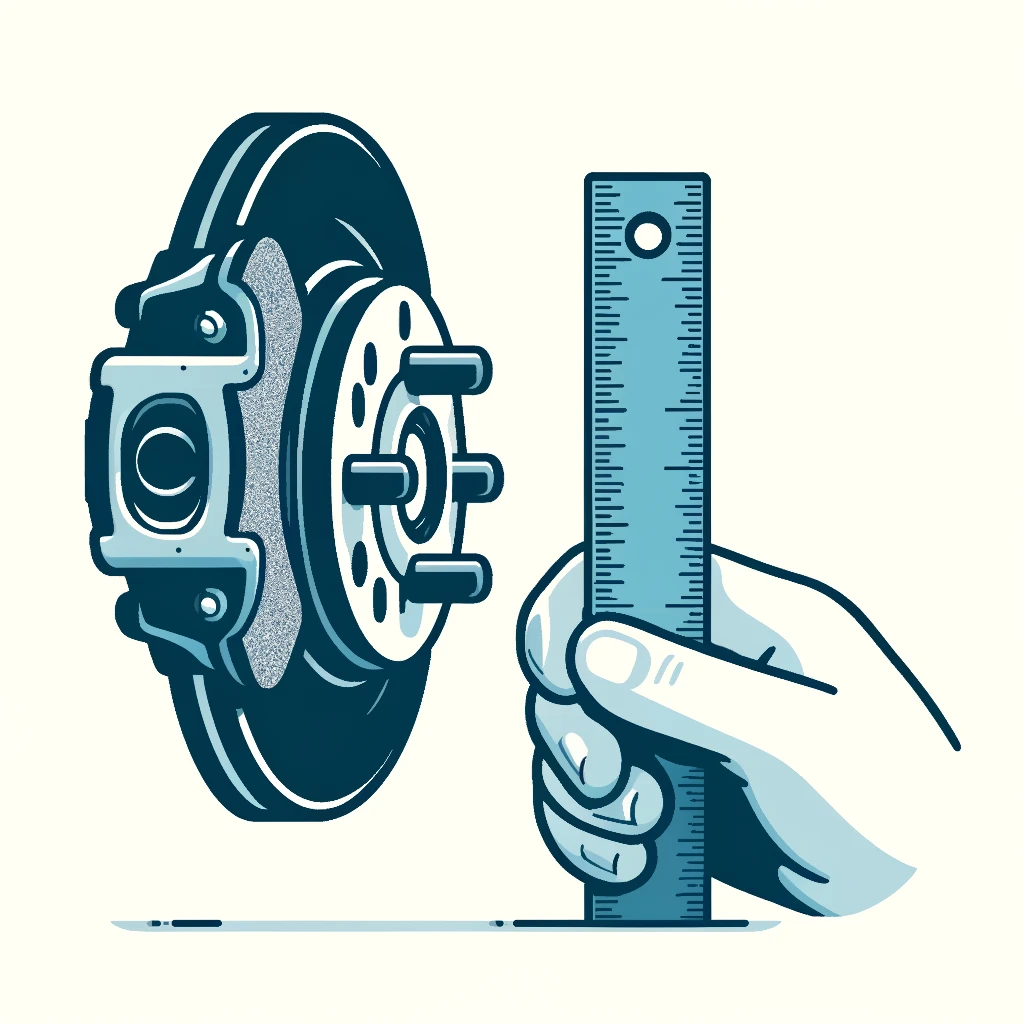Checking the brake pads is a crucial part of vehicle maintenance that can prevent costly repairs and ensure your safety on the road. This guide will walk you through how to inspect your brake pads to determine if they need replacement.
Introduction
Brake pads are a key component in your vehicle’s braking system, pressing against the rotors to help you stop the car. Over time, they wear down and need to be replaced. Regular checks can help you catch worn pads before they affect your braking efficiency.
What You’ll Need
- Vehicle owner’s manual
- Safety gloves and goggles
- Tire iron (if necessary to remove the wheel)
- Jack and jack stands
- Flashlight or work light
- Ruler or measuring gauge
Steps to Check Brake Pads
Prepare Your Vehicle
- Park on Level Ground: Ensure your car is parked on a flat surface and the parking brake is engaged.
- Loosen the Lug Nuts: Before jacking up the car, slightly loosen the lug nuts on the wheel with the tire iron if the wheels need to be removed to access the brake pads.
Lift the Vehicle
- Jack Up the Car: Use a car jack to lift the vehicle. Secure it with jack stands for safety.
- Remove the Wheel: Take off the wheel to get a clear view of the brake assembly.
Inspect the Brake Pads
- Locate the Brake Pads: Look at the brake caliper, which is the assembly that houses the brake pads and presses them against the rotor. The brake pads are the actual material that comes into contact with the brake rotor.
- Check Pad Thickness: Use a flashlight to inspect the visible part of the brake pad. If your pads have less than 1/4 inch of material (about 6 mm), they need to be replaced.
- Look for Wear Indicators: Some brake pads have a small metal tab that makes a squealing noise when the pad material is too low. If you hear this noise consistently while braking, it’s likely time to replace your pads.
Check for Any Additional Wear or Damage
- Inspect for Uneven Wear: Check if the brake pads are wearing evenly. If one pad is significantly more worn than the other, this could indicate a problem with the brake caliper.
- Look for Damage: Examine the pads for any signs of cracking, crumbling, or excessive wear.
Replace the Wheel and Lower the Car
- Reattach the Wheel: Once the inspection is complete, put the wheel back on and tighten the lug nuts.
- Lower the Vehicle: Remove the jack stands and lower the car using the jack. Fully tighten the lug nuts with the tire iron.
Frequently Asked Questions (FAQs)
How often should I check my brake pads?
It’s a good idea to check your brake pads every 10,000 to 15,000 miles or at least once a year. However, the frequency can depend on your driving habits and the type of vehicle you drive.
What are the signs that my brake pads need replacing?
Common signs include a decrease in braking performance, a squealing or screeching sound when braking, and a deeper metallic grinding sound, which may indicate that the pads have worn down completely to the backing plate.
Can I check brake pads without removing the wheels?
In many vehicles, it is possible to check the thickness of the brake pads through the wheel. This can be done by looking at the brake pad through the spaces between the wheel’s spokes. A flashlight can help illuminate the pad.
What is the minimum thickness for brake pads?
The minimum recommended thickness for brake pads is typically 1/4 inch (about 6 mm). However, always refer to your vehicle’s owner’s manual for specific recommendations.
What happens if I don’t replace worn brake pads?
Failing to replace worn brake pads can lead to reduced braking efficiency and increased stopping distances. Moreover, it can cause severe damage to the brake rotors and potentially lead to more expensive repairs.
Can worn brake pads affect my car’s safety?
Yes, worn brake pads can significantly affect your car’s braking system, leading to increased risk during driving, especially in emergency stopping scenarios. It is crucial to maintain well-functioning brake pads to ensure safety.
Is it possible to replace brake pads by myself?
Yes, replacing brake pads is a common DIY repair for many car enthusiasts. However, it requires some mechanical knowledge and the right tools. If you’re unsure, it’s best to have them replaced by a professional mechanic.
Conclusion
Regularly checking your brake pads is a simple yet crucial part of car maintenance that can significantly impact your safety. If you’re unsure about the condition of your pads or how to replace them, consult a professional mechanic.
